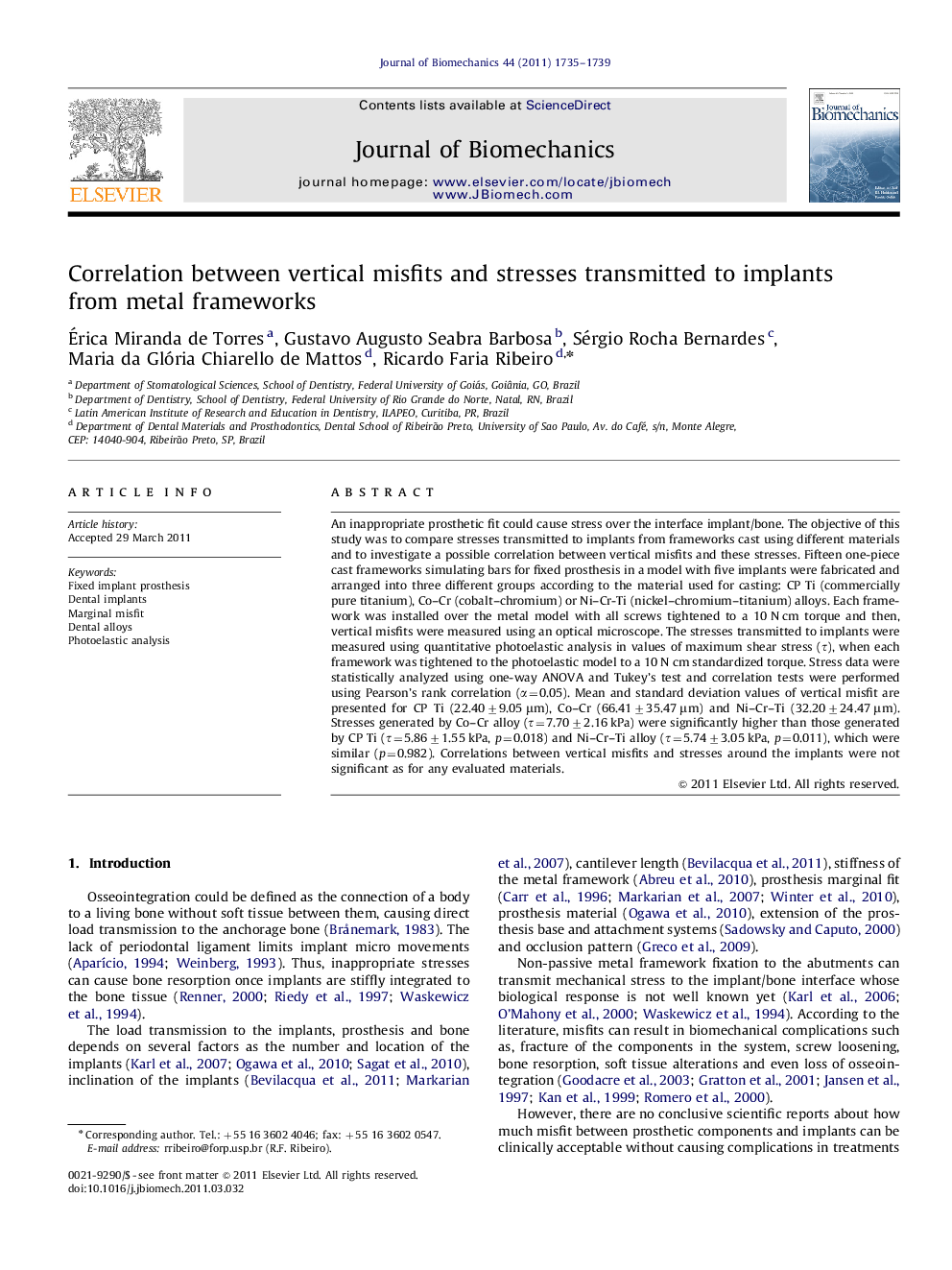| Article ID | Journal | Published Year | Pages | File Type |
|---|---|---|---|---|
| 10433215 | Journal of Biomechanics | 2011 | 5 Pages |
Abstract
An inappropriate prosthetic fit could cause stress over the interface implant/bone. The objective of this study was to compare stresses transmitted to implants from frameworks cast using different materials and to investigate a possible correlation between vertical misfits and these stresses. Fifteen one-piece cast frameworks simulating bars for fixed prosthesis in a model with five implants were fabricated and arranged into three different groups according to the material used for casting: CP Ti (commercially pure titanium), Co-Cr (cobalt-chromium) or Ni-Cr-Ti (nickel-chromium-titanium) alloys. Each framework was installed over the metal model with all screws tightened to a 10 N cm torque and then, vertical misfits were measured using an optical microscope. The stresses transmitted to implants were measured using quantitative photoelastic analysis in values of maximum shear stress (Ï), when each framework was tightened to the photoelastic model to a 10 N cm standardized torque. Stress data were statistically analyzed using one-way ANOVA and Tukey's test and correlation tests were performed using Pearson's rank correlation (α=0.05). Mean and standard deviation values of vertical misfit are presented for CP Ti (22.40±9.05 μm), Co-Cr (66.41±35.47 μm) and Ni-Cr-Ti (32.20±24.47 μm). Stresses generated by Co-Cr alloy (Ï=7.70±2.16 kPa) were significantly higher than those generated by CP Ti (Ï=5.86±1.55 kPa, p=0.018) and Ni-Cr-Ti alloy (Ï=5.74±3.05 kPa, p=0.011), which were similar (p=0.982). Correlations between vertical misfits and stresses around the implants were not significant as for any evaluated materials.
Related Topics
Physical Sciences and Engineering
Engineering
Biomedical Engineering
Authors
Ãrica Miranda de Torres, Gustavo Augusto Seabra Barbosa, Sérgio Rocha Bernardes, Maria da Glória Chiarello de Mattos, Ricardo Faria Ribeiro,
